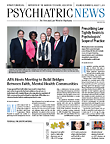A new set of guidelines from the Association of American Medical Colleges (AAMC) has been drafted to outline the activities that new physicians should be able to perform on the first day of their residency training.
“Core Entrustable Professional Activities for Entering Residency” is a formal outline of the activities and requisite competencies and behaviors that every graduating medical student should be able to perform without supervision at the start of residency.
“As the nation’s medical school graduates prepare to begin their residency training, ensuring they have the confidence to perform these activities is critical for clinical quality and safety,” said AAMC President and CEO Darrell Kirch, M.D. “These guidelines take medical education from the theoretical to the practical as students think about some of the real-life professional activities they will be performing as physicians.”
Entrustable professional activities (EPAs) are the “units of professional practice, defined as tasks or responsibilities, that trainees are entrusted to perform unsupervised once they have attained sufficient specific competence. EPAs are independently executable, observable, and measurable in their process and outcome and, therefore, suitable for entrustment decisions.”
A panel of 13 educators, interns, and residents—chaired by Timothy Flynn, M.D., senior associate dean for clinical affairs at the University of Florida—drafted the document in response to feedback from residency program directors about the clinical preparedness of entering residents and from literature documenting a performance gap at the transition point between medical school and residency training.
The guidelines include 13 activities that all medical students should be able to perform, regardless of specialty, to standardize the expectations for both learners and teachers and better prepare students for their roles as clinicians. The core EPAs were chosen as the framework for the guide because they offer a promising approach for assessing the real-world impact of a resident physician’s education on patient care, according to the AAMC document.
Deborah Hales, M.D., director of APA’s Department of Education, told Psychiatric News that EPAs, though distinct from the Milestones Project developed for residency (Psychiatric News, August 28, 2013) are conceptually similar in that both describe specific and discrete competencies necessary to move to the next level of physician education. “The idea is that you don’t demonstrate competency simply by the amount of time spent in schooling, but behaviorally by what you are able to do,” she said. “So someone has to see that the student can, for instance, correctly take a history.
“The whole medical education system is moving toward a continuum of learning, so that when you leave medical school you have the skills to be a competent resident, and when you leave residency you have the competencies to be in practice,” Hales said.
The guidelines describe expected behaviors and provide clinical vignettes demonstrating how new residents would, without direct supervision, handle each specific EPA. This year, the AAMC will engage a few medical schools to launch a multiyear pilot and develop a learning community to share ideas about how the EPAs can be broadly implemented.
The 13 EPAs are the following:
Gather a history and perform a physical examination.
Prioritize a differential diagnosis following a clinical encounter.
Recommend and interpret common diagnostic and screening tests.
Enter and discuss orders and prescriptions.
Document a clinical encounter in the patient record.
Provide an oral presentation of a clinical encounter.
Form clinical questions and retrieve evidence to advance patient care.
Give or receive a patient handover to transition care responsibility.
Collaborate as a member of an interprofessional team.
Recognize a patient requiring urgent or emergent care and initiate evaluation and management.
Obtain informed consent for tests and/or procedures.
Perform general procedures of a physician.
Identify system failures and contribute to a culture of safety and improvement.
Robert Englander, M.D., the AAMC’s senior director of competency-based learning and assessment and a member of the panel, said that implementing and refining the EPAs will take time. He noted that the AAMC Graduation Questionnaire will provide insight into whether students feel confident performing the 13 core activities in the guidelines. Pilot programs, he said, will answer specific questions about the feasibility of curriculum development for each of the EPAs and how entrustment decisions will be made.
“The vision is that five to 10 years from now, all graduates will have been entrusted to do these 13 activities on day one of residency, and the result will be a much safer and effective workforce entering into residency in July each year,” Englander said. ■
Two versions of the guide—a “Curriculum Developers’ Guide” and a “Faculty and Learners’ Guide”—are available from the AAMC and can be accessed
here.
